Steven Eubanks (to 70 Years of Birthday) *
Abstract
* Article is published in online edition
How to cite: Steven Eubanks (to 70 years of birthday) // Sibirskij Lesnoj Zurnal (Sib. J. For. Sci.). 2017. N. 6 (in English and in Russian).
Article
Steven Eubanks
(to 70 years of birthday)
Steve Eubanks was born in Salem, Oregon, U.S.A. on November 2, 1947. He lived on a farm near Salem with his parents and two uncles until he was 10 years old and his family moved into the city. He continued to visit and work on the farm until he completed high school and that experience gave him his appreciation of nature and working outdoors.
When he completed high school, Steve attended the Oregon State University College of Forestry. He studied Forest Engineering, a curriculum that combined forestry and civil engineering. During his college years, he spent each summer working as a temporary employee for the United States Forest Service on several national forests.
When he graduated in 1970, Steve began working for the U.S. Forest Service as a permanent employee. His first job was as a civil engineer on the Mt. Hood National Forest in the state of Oregon. After two years working as an engineer, Steve knew that he preferred working in a job that involved more forestry so he transferred to a forester position on the Estacada Ranger District of the Mt. Hood National Forest. From there, Steve moved through a series of promotions and increased responsibility. He worked as a District Timber Management Staff on the Tieton Ranger District of the Wenatchee National Forest in the state of Washington, as District Ranger in charge of the Bear Springs Ranger District back on the Mt. Hood National Forest, then as District Ranger of the larger Blue River Ranger District on the Willamette National Forest, also in the state of Oregon. In his early career, several of Steve’s assignments were in locations not near any city. While this created some inconveniences for Steve and his family, it also provided an opportunity to introduce his children to nature and all the beauty it represents.
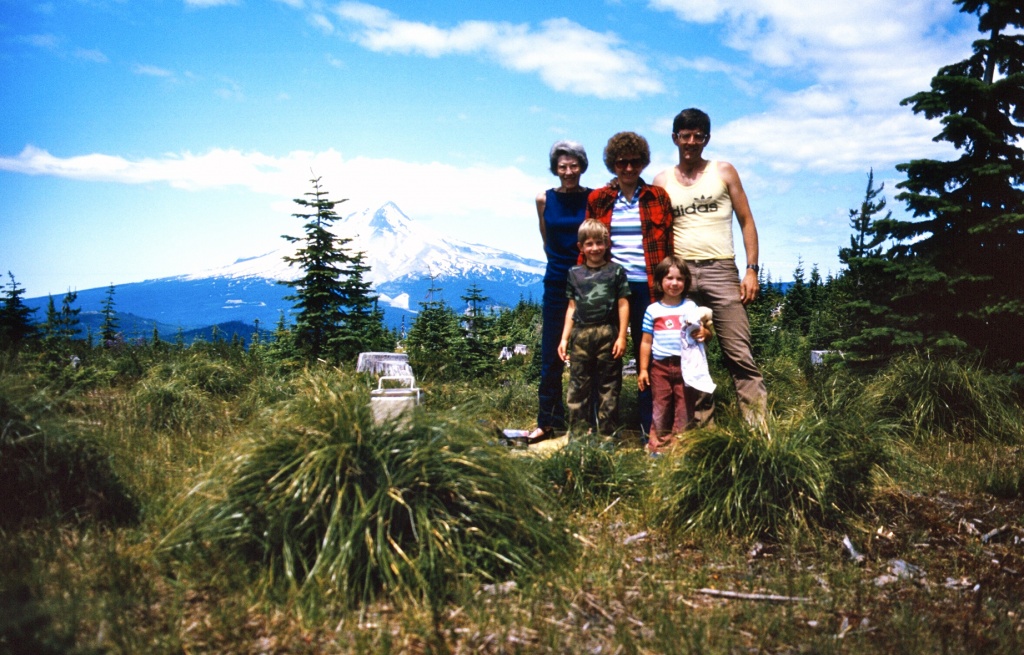
With mother Betty, wife Nancy, son David, and daughter Laura on the Bear Springs Ranger District, with Mt. Hood in the background, in Oregon, 1983.
In 1988, received a promotion to the position of National Recreation Initiative Coordinator in the U.S. Forest Service National Headquarters in Washington, D.C.
After two years in Washington, D.C., Steve moved to the state of Minnesota to be the Forest Supervisor of the Chippewa National Forest. He was in Minnesota for 7 years and then moved to the state of California to be the Forest Supervisor of the Tahoe National Forest where he worked for 9 years until his retirement from the U.S. Forest Service in 2008. His career with the U.S. Forest Service totaled 39 years.
Steve now works as Forestry Consultant on projects involving sustainable forestry, wildfire reduction, carbon credits, and biomass energy production.
During his U.S. Forest Service career, Steve developed a strong partnership with researchers from the U.S. Forest Service Research Branch as well as researchers from other government agencies and universities. This partnership led to development of new innovations in forest management and even to evolution of the Forest Service’s national “Ecosystem Management” initiative that influenced management of all national forests. In addition, many research projects and publications resulted from the collaboration of the partnership. Steve won awards for his work with research and for the technology transfer of the research results.
It was during his tenure as Forest Supervisor of the Chippewa National Forest that Steve first began his work in Russia. In 1995, he was offered the opportunity to be on a U.S. Forest Service team that, in 1994, had started working with Russian partners in the Krasnoyarsk Region on many concepts of sustainable forest management. The trip in 1995 was 4 weeks long and included visits to many areas in the Region and many research projects in order to provide the U.S. Team with a good overview of forestry and forestry research in the Region. A strong partnership developed among the U.S. Forest Service, V. N. Sukachev Institute of Forest, Siberian Branch of the Russian Academy of Sciences, the Russian Federal Forest Service, Lesproekt, Avialesookhrana, and the Predivinsk timber harvesting enterprise with the Central Siberia Sustainable Forestry Project. This partnership has continued, though it evolved to include the Krasnoyarsk Regional government after 2007 when responsibility for management of the region’s forests transferred to the Regional Government.
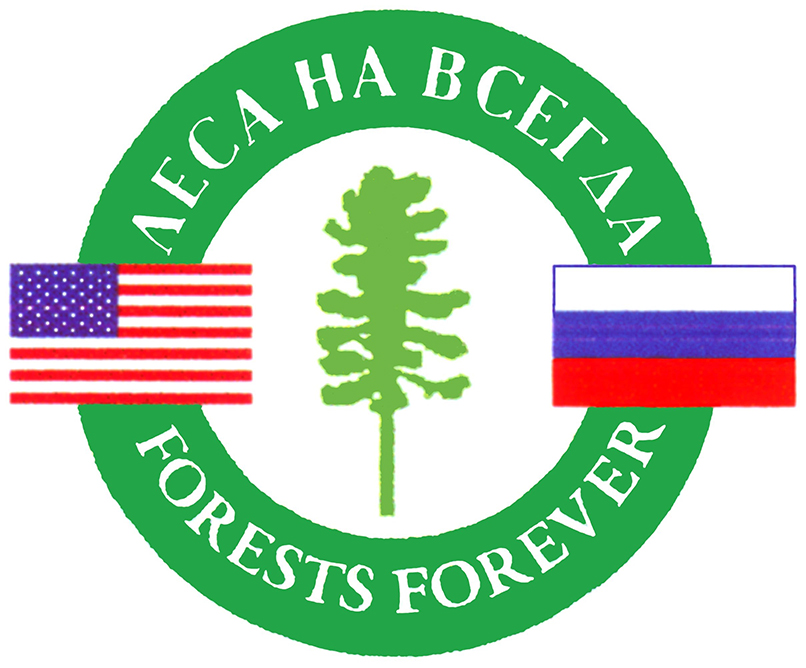
The symbol of the Central Siberia Sustainable Forestry Project. The central image is a Siberian stone pine and the two flags represent the strong cooperation between Russia and U.S. for the project.
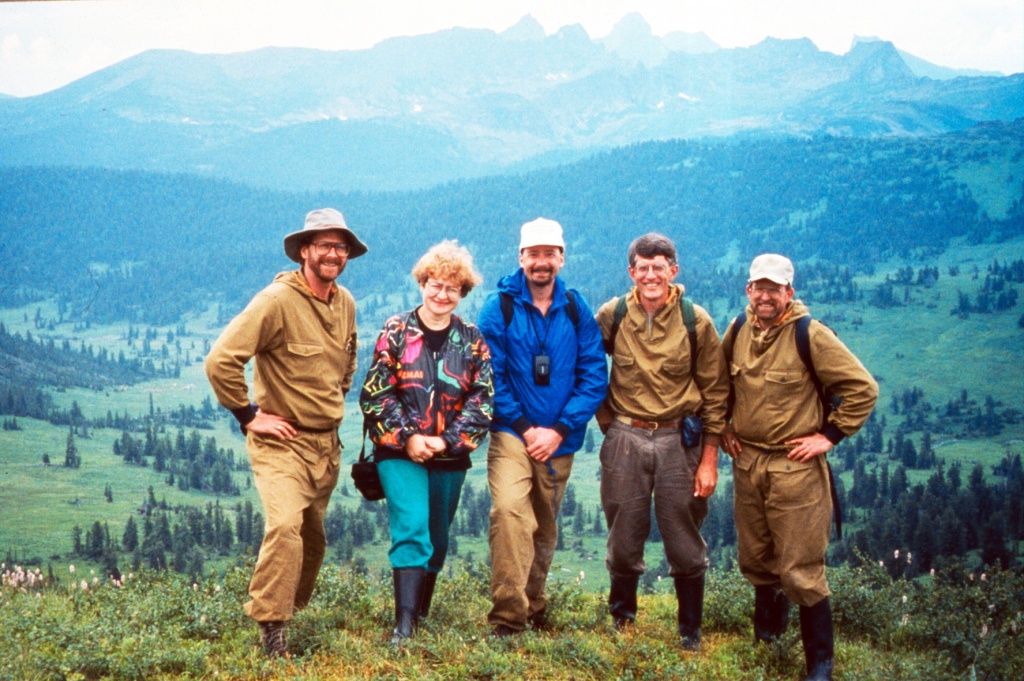
With the U.S. Team (from left to right: Andy Gillespie, Andrei Rykoff (third from left), Steve Eubanks, and Rich Lasko) and Nadezhda Tchebakova (second from left) near the "Sleeping Sayan" mountain ridge (at the present time – Ergaki Natural Park), during first visit to Russia, Western Sayan Mountains, Ermakovskiy District, Krasnoyarsk Krai, 1995.
The project initially included work in G.I.S., forest policy, silviculture, reforestation, site preparation, road management, insect management (primarily Siberian moth), logging technology, and fire management – both wildfire and prescribed/planned fire. More recently, the project has expanded to include illegal logging and some discussions of biomass energy.
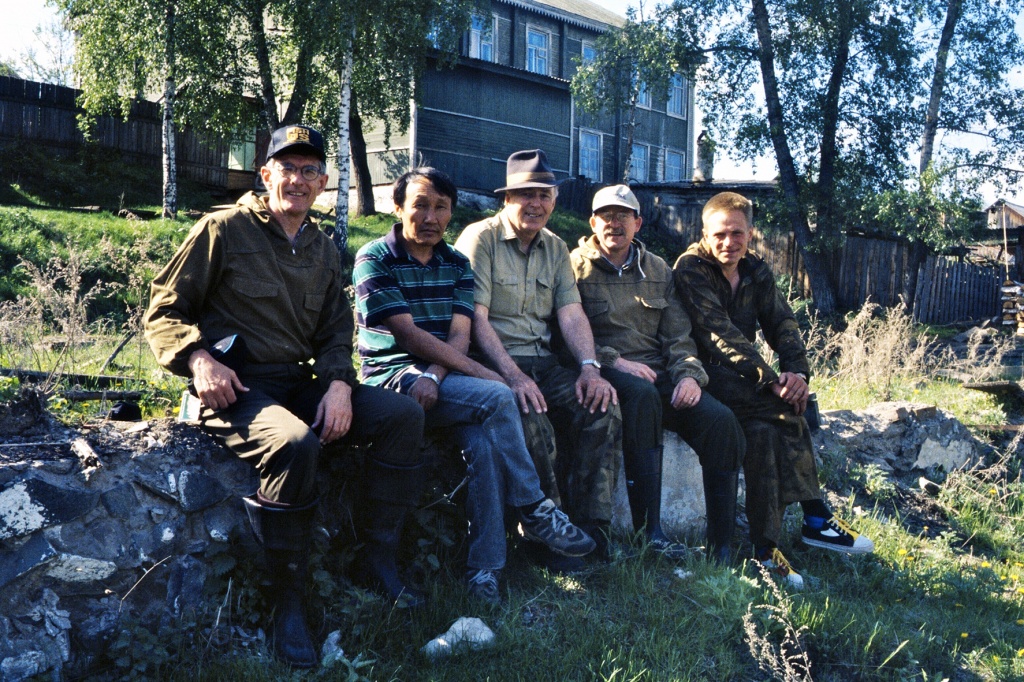
With the Sukachev Institute of Forest Fire Team (from left to right: Steve Eubanks, Yegor Kisilyakov, Erik Valendik, Rich Lasko (U.S.), and Sergey Verkhovets), in the settlement of Predivinsk wood harvesting enterprise, Bol'shemurtinskiy District, Krasnoyarsk Krai, 1997.
With Russian colleagues-foresters at the Pogorelskiy experimental forest (from left to right: Vladimir Sokolov, Alexander Onuchin, Steve Eubanks, Rich Lasko, and Yegor Kisilyakhov), Emel'yanovskiy District, Krasnoyarsk Krai, June 2013.
While Steve’s work in Russia has been primarily in the Krasnoyarsk Region, he has also visited other regions: Karelia, Altai, Gorno-Altai, Irkutsk, Novosibirsk, Buryatia, Primor’ye and Khabarovsk. This has abled Steve to see a broad range of forestry-related projects and meet many colleagues involved in forestry work. And this has given Steve a broad understanding of forestry and forestry issues across Russia.
Since beginning to work in Russia, Steve has had the pleasure of hosting many forestry colleagues from Russia, often at his home. He has been able to show them various aspects of forestry work in the U.S. and has continued to learn from them as well. He welcomes more such visits from colleagues in the future. During one such visit in December 2009, a team representing the Russian Federal Forestry Agency, presented Steve with a Russian Forestry Society Medal for his long-term work in Russia, an honor he values greatly.
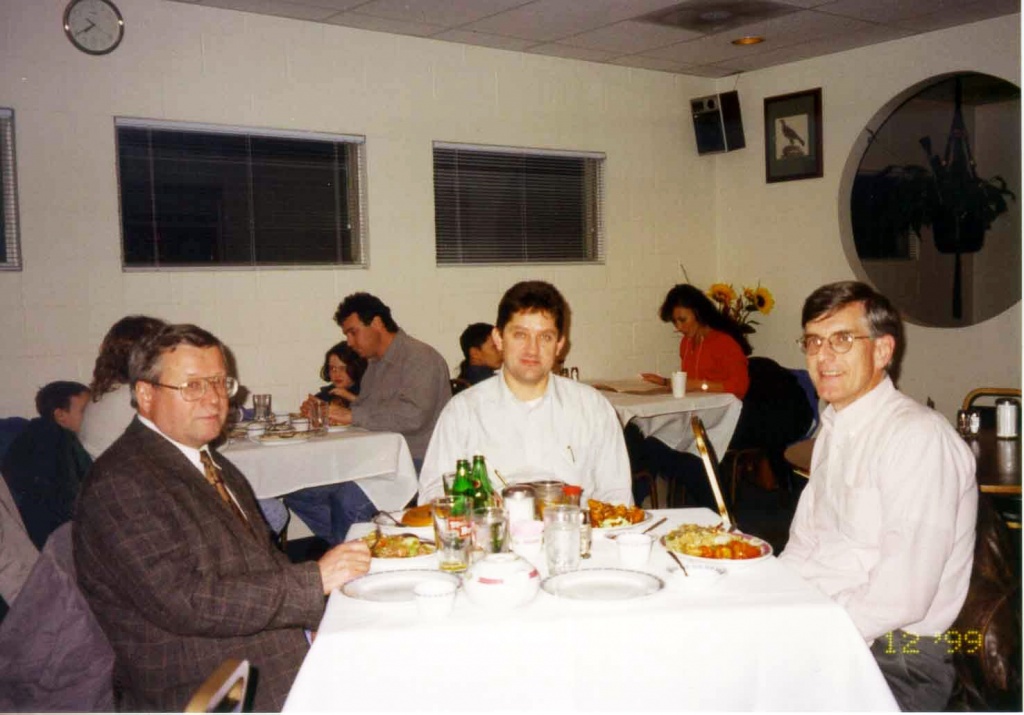
With Vladimir Sokolov (left) and Igor Danilin (in the center) during their visit to the U.S., California, 1999.
With Eugeniy Ponomarev, Dmitriy Selin, and Yegor Kisilyakhov (from left to right) at Lake Tahoe, during their visit to the U.S., California, 2012.
In 2014, Steve began editing the English language versions of abstracts and articles for the Siberian Journal of Forest Science and was asked to become a member of the Journal’s Editorial Board. This has given Steve a unique opportunity to assist the Journal but also to read many interesting articles from researchers involved with a wide range of forestry-related projects.
Most recently, Steve was asked to be a Judge/Juror at the Russian International Junior Forester Competition in Moscow. This was a very interesting assignment as Steve was able to meet and talk with judges and junior foresters from 27 other countries and see excellent presentations from young foresters who are working on many valuable projects.
Steve has greatly valued his opportunity to work in Russia. He has been able to meet many talented people who value forests and to gain a good understanding of Russia, Russian forestry and Russian people. But most of all, he has been able to make strong friendships with forestry professionals who have shown much kindness in hosting his visits and in helping him learn. He hopes he will be able to continue his work with Russia for many years.
Friends, colleagues, Editorial Board of the Siberian Journal of Forest Science cordially congratulate Steve with the jubilee and wish him strong health, peace, prosperity, and many happy returns in his life!

